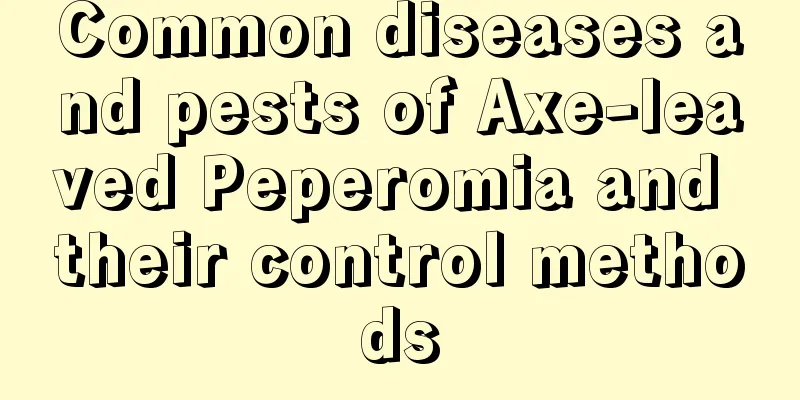Common diseases and pests of Axe-leaved Peperomia and their control methods

Common diseases and pests of Axeleaf PeperomiaDiseasesA common disease of Axe-leaf Peperomia is leaf spot. The symptoms of leaf spot disease are: oval, long, light reddish-brown spots on the leaves, surrounded by chlorotic circles, which later expand into large irregular patches with black spots on them. The leaf spot pathogen overwinters in diseased debris or on the surface of potting soil, and spreads with wind and rain to infect plants during the disease period the following year. It is easy to occur in greenhouses in all seasons. Excessive planting density, poor ventilation and excessive humidity can easily lead to disease. PestsA common pest of axe-leaf peperomia is scale insects. Once attacked by scale insects, the leaves will turn yellow, the branches will wither, the plants will decline, and it is easy to induce sooty mold disease. Scale insects have strong reproductive capacity, and the peak season for pests is the high temperature season in summer. They like hot and humid environments and often attach themselves to leaves. In the process of crawling, they destroy the tender green leaves of the axe-leaf peperomia and produce patches of gray lesions. Common pest and disease control methods of Axe-leaf PeppergrassStrengthen managementThe cause of diseases and insect pests is inadequate management and maintenance. During the maintenance process during the spring and autumn growing seasons and the winter and summer dormancy periods, paying attention to strengthening watering, lighting, and ventilation to ensure a suitable growth environment for the axe-leaf peperomia is the best prevention and control method. Cut off diseased leavesDuring the cultivation of Axe-leaf Peperomia, if scale insects are found on individual branches or leaves, you can gently brush them off with a soft brush, or combine it with pruning to cut off the insect-infested branches and leaves. They must be brushed clean, cut clean, and burned in a centralized manner; do not throw them away randomly. If leaf spot disease is found, the diseased leaves should be cut off in time and disinfected. Chemical treatmentLeaf spot can be prevented by spraying with Bordeaux mixture. Once scale insects are found, they should be sprayed with 1000 times diluted omethoate. |
<<: Planetary pests and diseases and their control methods
>>: Green bell pests and control methods
Recommend
What to do if the Begonia truncatum loses its leaves
Reason 1 Unsuitable soil for planting The soil fo...
Can potato seedlings be transplanted?
Can potato seedlings be transplanted? Potato seed...
Cultivation method of Jianlianrui tea
1. Soil For growing tea leaves, you can choose lo...
Cultivation methods and precautions of white crystal chrysanthemum
The plant of white crystal daisy is relatively ea...
What soil is best for growing Christmas cactus
1. Requirements for soil (1) The soil should be l...
Can peace trees be planted in the yard?
Can I plant a peace tree in my yard? You can plan...
Do bananas reproduce by seeds? (How do bananas reproduce?)
Banana is one of the most popular fruits, grown i...
Can passion fruit seeds be eaten? Do I need to chew them?
1. Can the seeds be eaten? In fact, its seeds are...
How to propagate Brazilian wood by cuttings
Cutting classification: The most common method of...
When is the right time to sow rice?
Rice planting time Rice is a cereal crop of the g...
How to grow hibiscus
1. Fertilizer Hibiscus is a perennial flower of t...
How to deal with yew root rot
1. Caused by excessive watering When caring for y...
How to grow the blue succulent
Growth conditions of blue succulent The small blu...
Soybean planting and harvesting time
Soybean planting time The time of soybean plantin...
How to prune navel oranges in winter?
The significance of pruning Some friends are relu...









